![Bert Benckhuysen, Senior Product Manager, EMEA, Mimaki at formnext 2018 [Image: Fabbaloo]](https://fabbaloo.com/wp-content/uploads/2020/05/IMG_20181115_150114_img_5eb0a1eb015c8.jpg)
Mimaki sees a bright, and brightly colored, future for industrial 3D printing.
Bert Benckhuysen, Senior Product Manager, EMEA, shares a look at Mimaki’s accomplishments and strategies in our interview from formnext.
One of the initial points of differentiation with Mimaki’s full-color 3D printing solution that came up quite quickly in our chat was a simple one: it is commercially available now. The company introduced its 3DUJ-553 system at last year’s formnext and a year on saw some market familiarity at the event, alongside more color overall coming to market.
“When people want photorealistic color, we hope they will think of us,” Benckhuysen said. “We are a Japanese engineering company of more than 40 years, and one of the first to come up with digital large-format printing. This is one of our biggest legs. We also have printers for textiles, both direct and transfer, as another leg. The third leg of the chair is UV LED printing, which we were the first to introduce to market, in 2005. The fourth leg is now 3D printing. All the experience of all these different technologies through the years are being put into our 3D printing.”
Leveraging expertise in 2D printing to enter the 3D printing industry is not an uncommon strategy, as several big-name printing companies have set their sights on another dimension for inkjet technology. Mimaki in particular is focusing on its developed expertise in both industrial and full-color printing to bring both offerings to additive manufacturing, where these qualities are in high demand.
“For us, it is important: in 2D, ‘industrial’ means high unattended uptime, connected with robots,” he explained of the former. Turning to the latter, an important aspect is “spot-on color. If you say ‘Coca-Cola red,’ it needs to be Coca-Cola red, not just close. We have integrated this into 3D printing. I think still we are the only ones measuring and correcting colors; these will be exactly the same for the first unit to the second unit.”
This consistency in color-matching on an industrial scale ticks a few boxes for 3D printing, which is increasingly turning to a short, but critical, checklist for volume production: reliability, repeatability, speed, and scale.
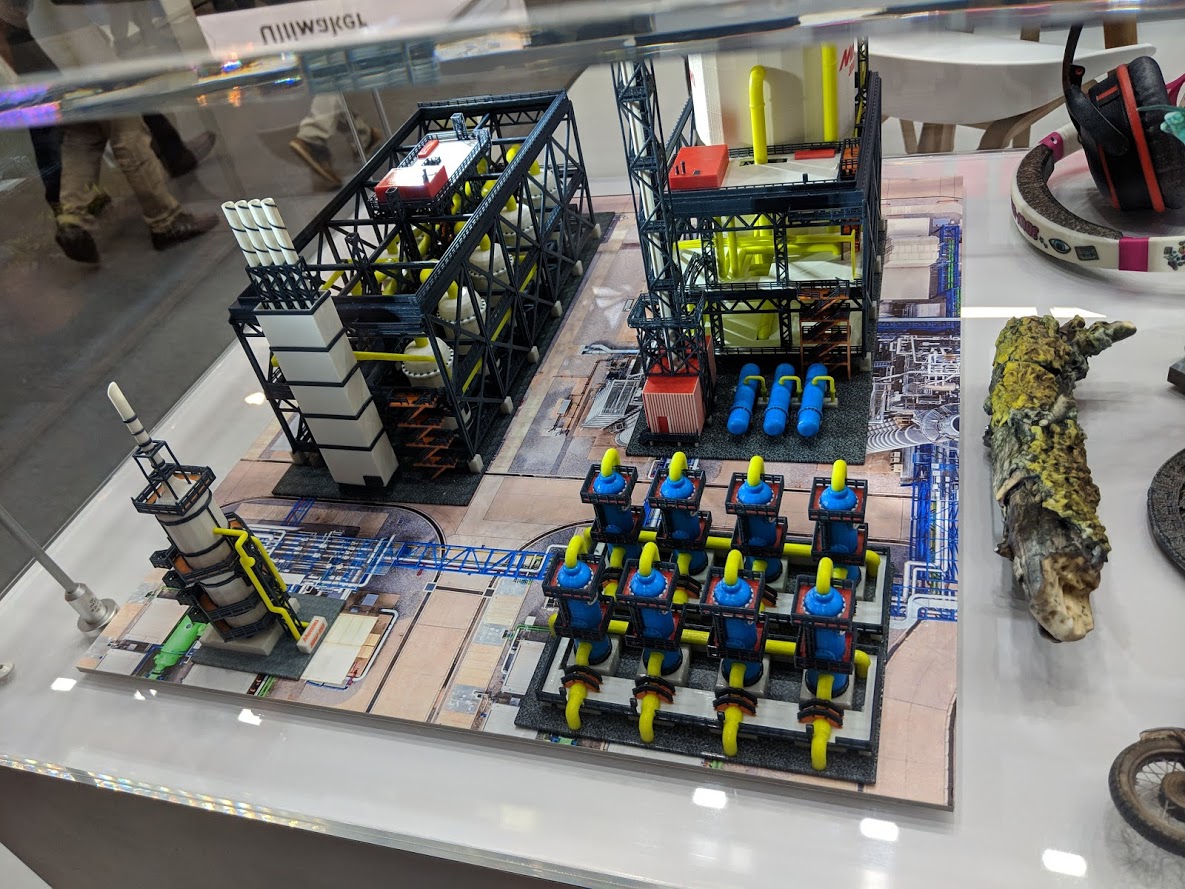
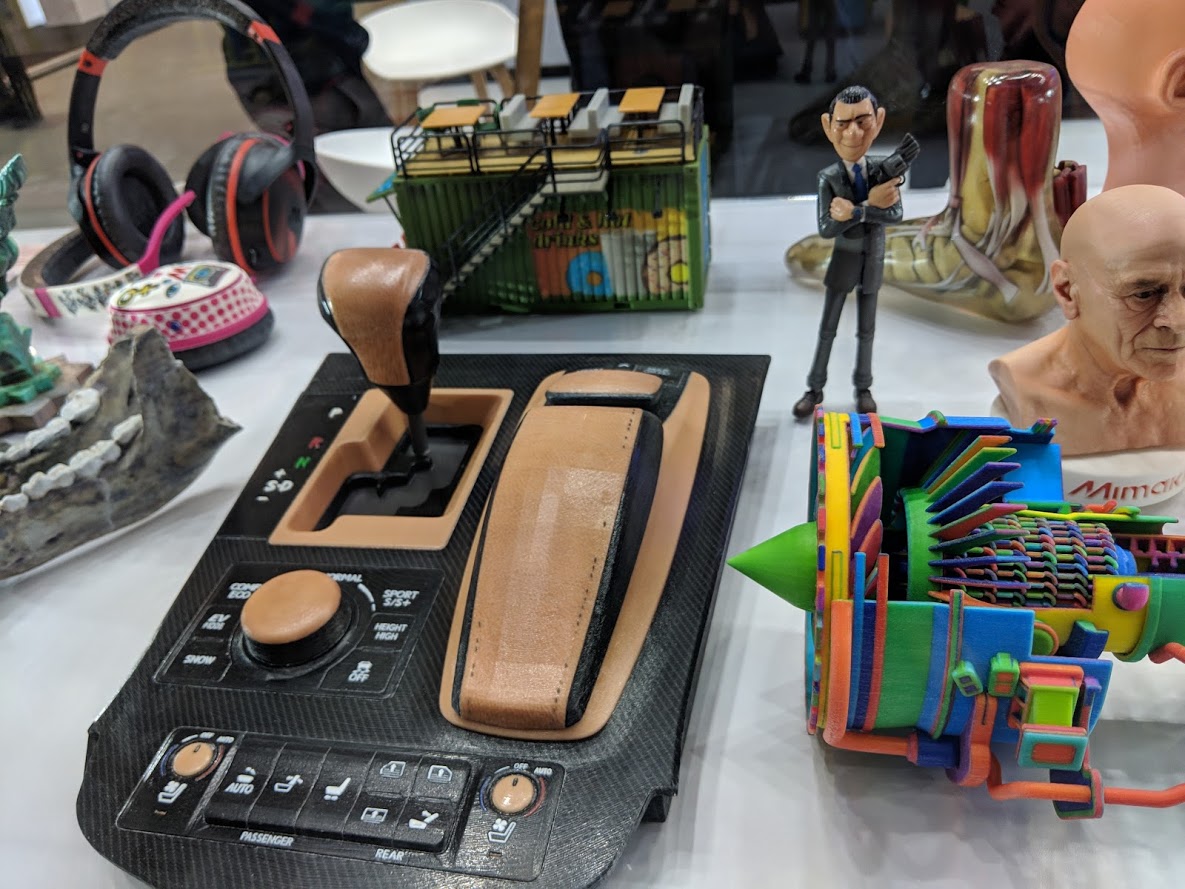
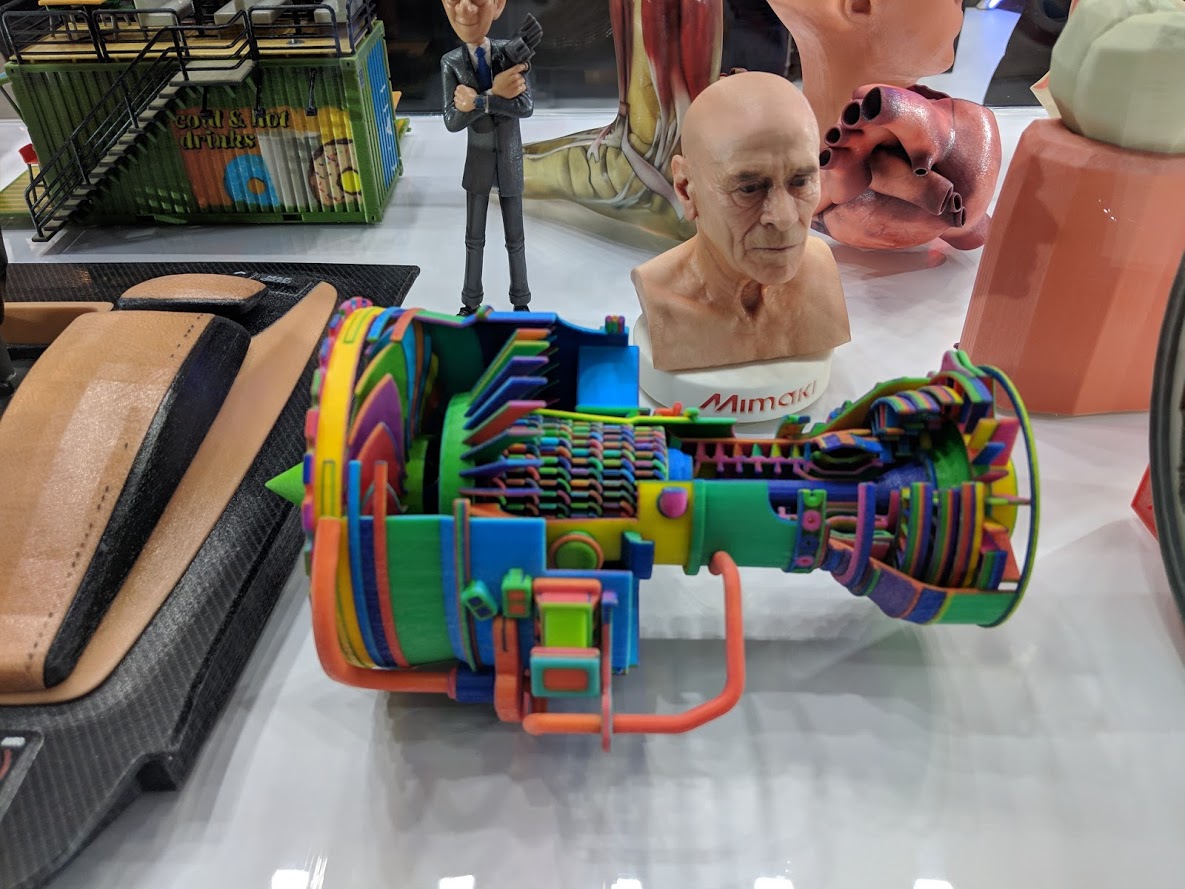
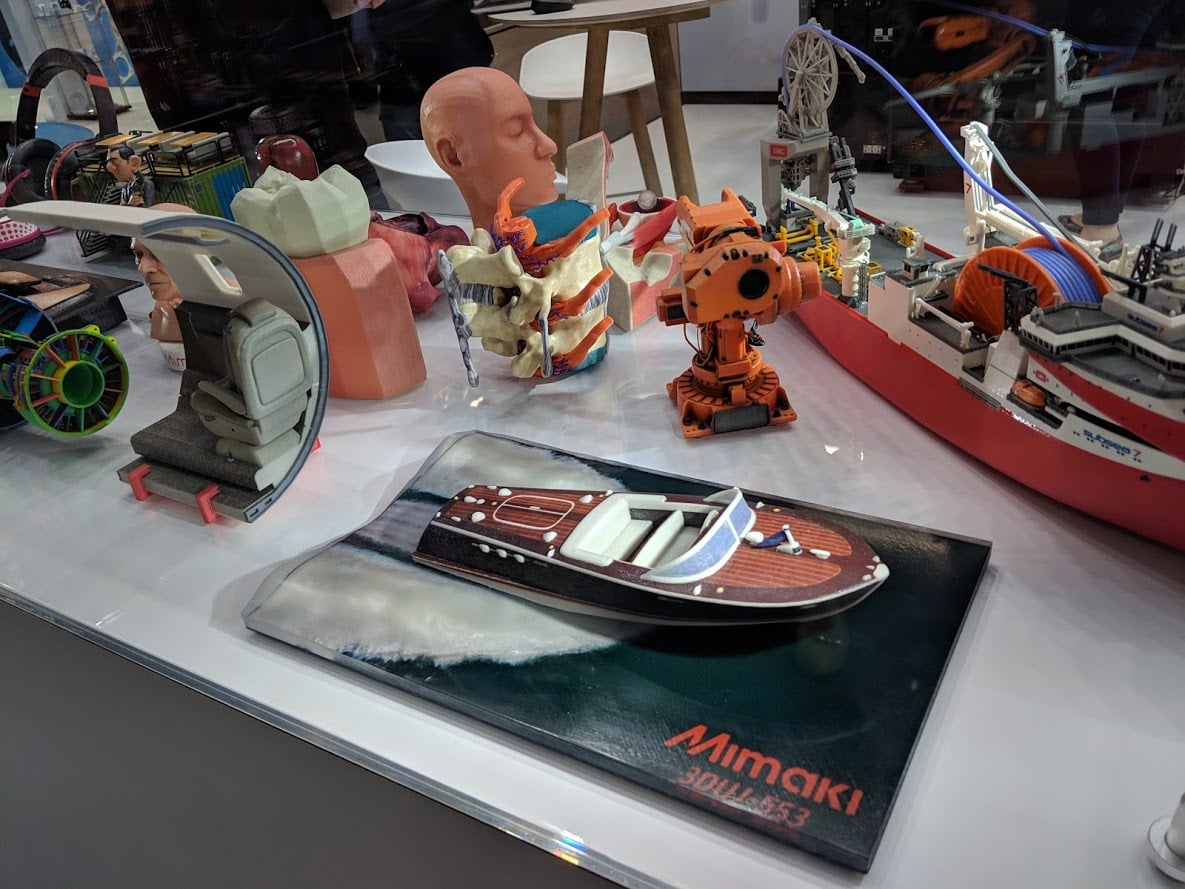
To create colors that are a perfect fit for corporate needs, like that trademark Coca-Cola red, Mimaki works with more colors than anyone else in the 3D printing industry today.
“We have more than 10 million colors, and colors you really need for gradients. The competition goes to about 8,000 colors — for us, this is not full-color. One of our biggest strengths is coming from that full-color world,” Benckhuysen noted of Mimaki’s legacy in 2D.
“Designers love color, we know that. They can see exactly what will print once their monitor is exactly calibrated. This is a very strong thing and we are proud to introduce it in 3D printing.”
Mimaki’s 3D printing process also works with soluble supports, which offers post-processing benefits over powders. No sandblasting, for one, which could potentially lose detail or even fine pieces in the process. Submerging a completed print in water will remove the support structures, leaving a clean print.
![A print-in-progress at formnext [Image: Fabbaloo]](https://fabbaloo.com/wp-content/uploads/2020/05/IMG_20181115_150158_img_5eb0a1edac631.jpg)
Another strong piece of the Mimaki puzzle comes from its global operations. Working in more than 100 countries, each with its own sales and service teams, brings the company’s centralized technologies and know-how around the world. The 3DUJ-553 is based on one of Mimaki’s most industrial printers, Benckhuysen noted. Because of this relationship, any engineer with Mimaki experience can help with service due to the similarities; it has basically the same frame, he added, though obviously with new software. A big advantage he pointed out is that because service is all local, engineers will speak the language of their customers, literally.
The printers are, of course, designed to not require significant servicing. Because they are made for industrial use, particular attention was paid to the printheads installed.
“The big difference between non-industrial and industrial is that we can circulate ink through the inkheads. It is not clogging because the ink keeps moving,” Benckhuysen added.
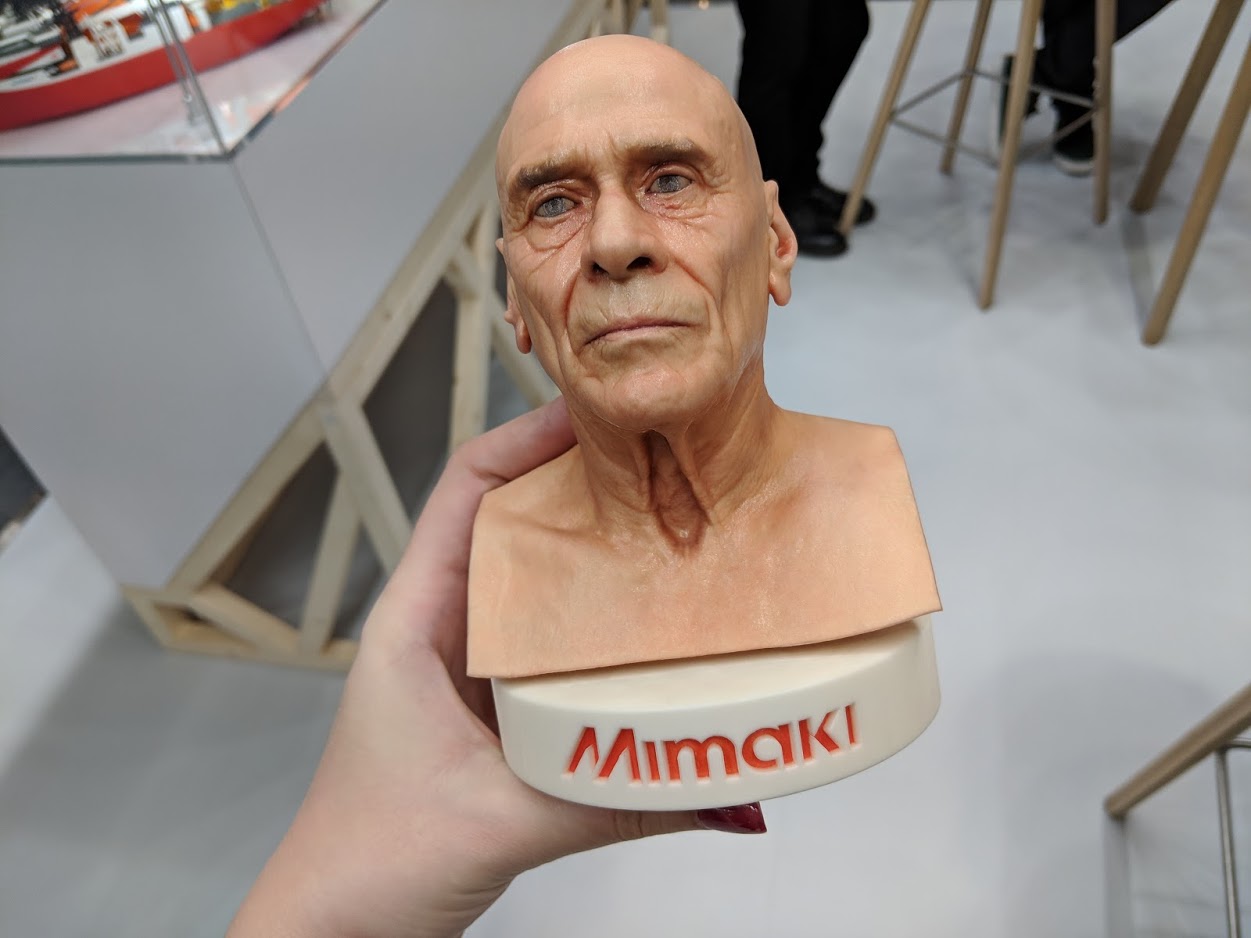
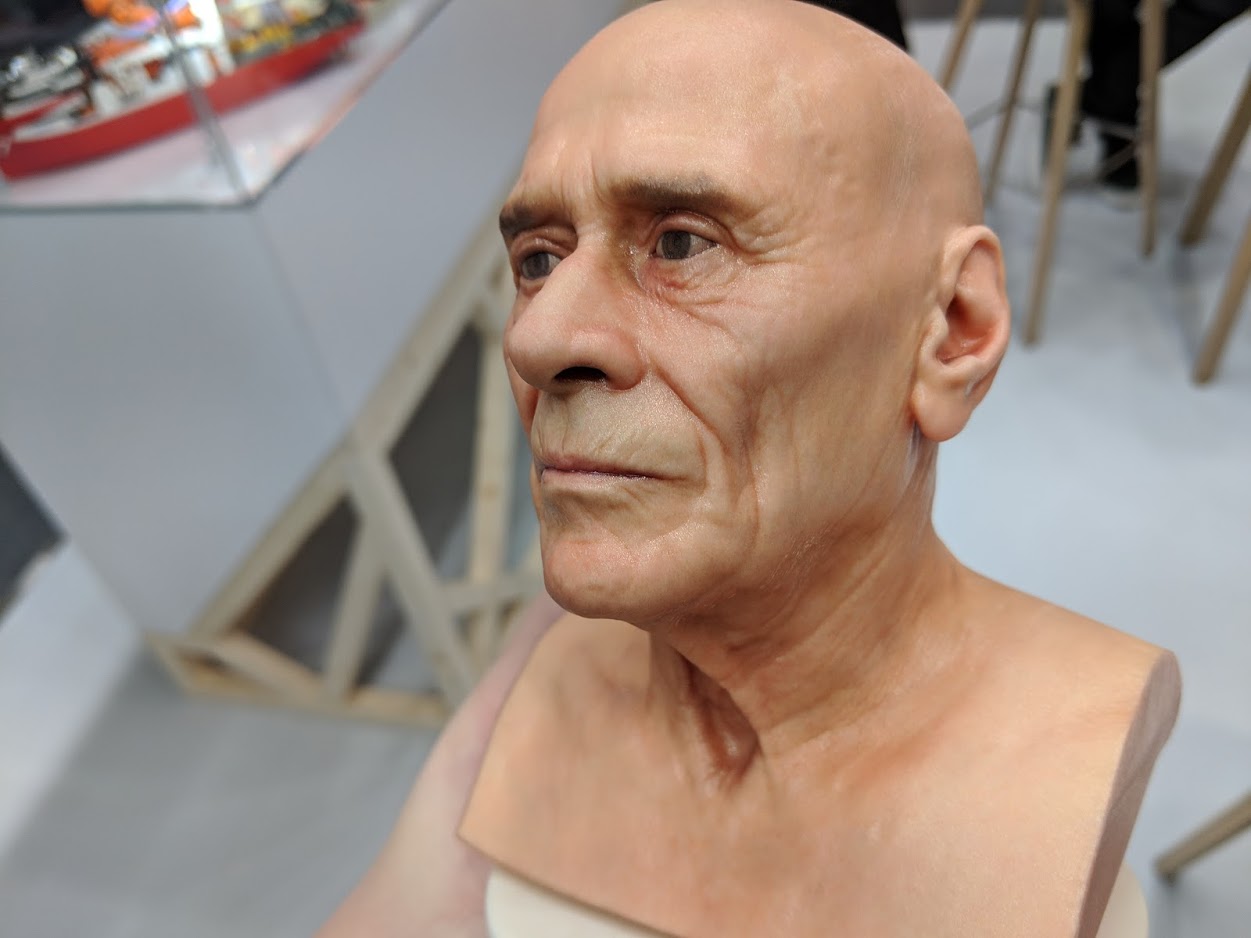
The inks used are outdoor- and fade-resistant; Mimaki developed these specifically, understanding the need for UV-resistance in color. The company can measure color swatches and load these into the system for use; “the surprise is over,” Benckhuysen noted, adding, “we know what the printer will do and how it will come out, and we can show that on the screen.”
The 3DUJ-553 offers a 50 x 50 x 30 cm print volume and is priced under €200K.
“We are about one year in the market, so still quite new and quite busy. We are building new sales agents, new relationships. It takes some time as a newcomer — and already at formnext we see people are coming to find us,” Benckhuysen said.
Coming to find Mimaki was a no-brainer, as the innovative company offers honestly impressive capabilities in 3D printing — and, frankly, they were easy to find as the colorful booth drew quite a crowd.
![This finely detailed likeness drew a lot of attention at formnext [Image: Fabbaloo]](https://fabbaloo.com/wp-content/uploads/2020/05/IMG_20181115_150259_img_5eb0a1ef4d31a.jpg)
Via Mimaki

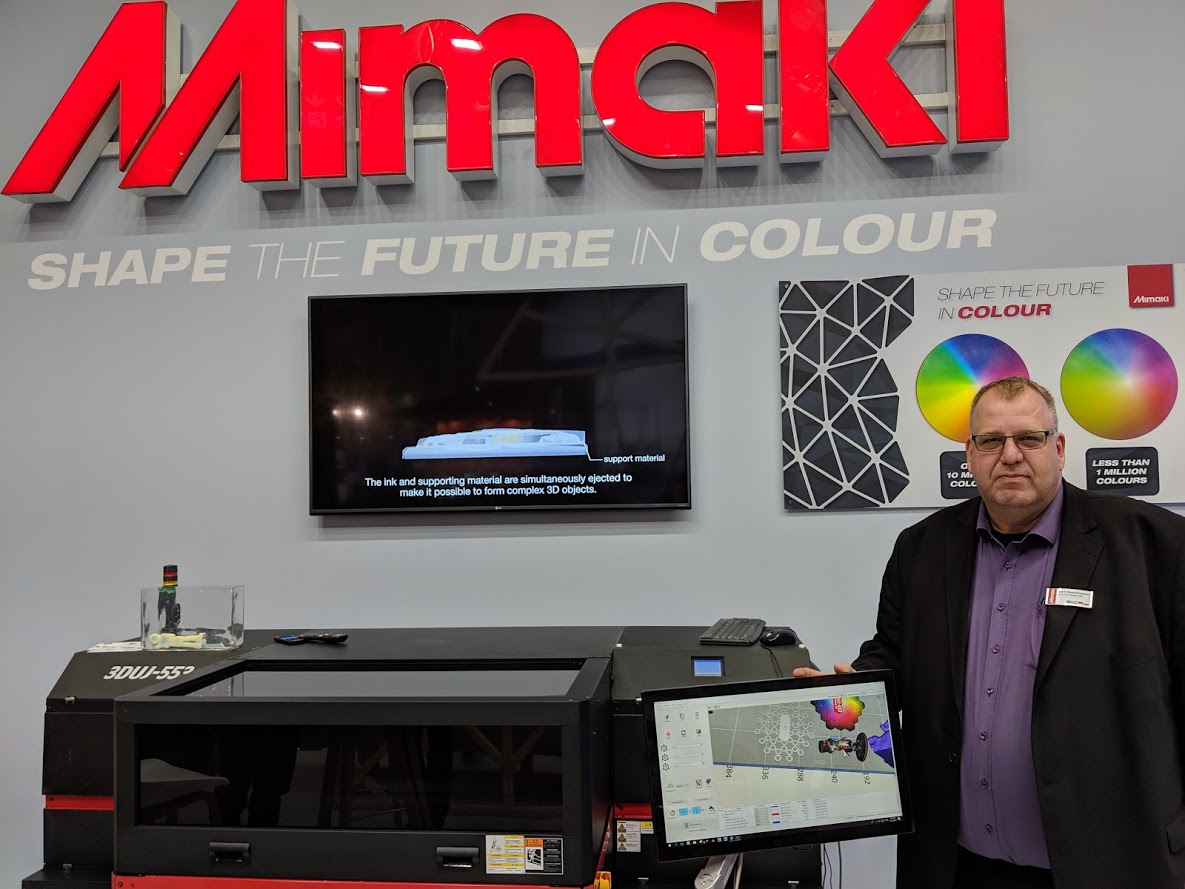









If you’re a youngin’ whose neurons have just myelinated or an educator who’s responsible for bludgeoning their brain tissue with knowledge, there’s a 3D printer option you’ll want to add to your lab list – A RIZE 3D Printer.